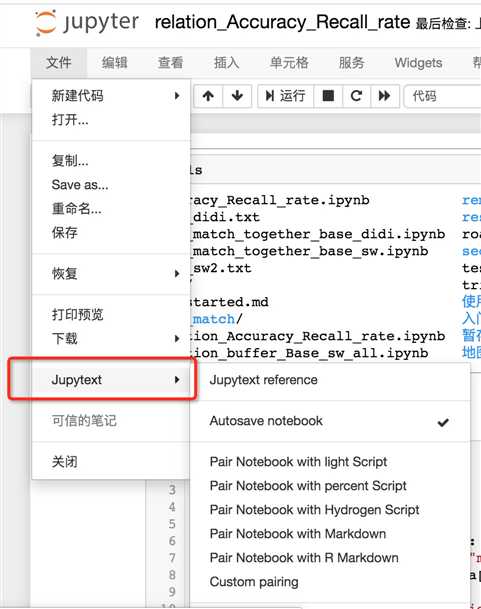标签:in place NPU features windows jpg c++ circle scripts image

Jupytext can save Jupyter notebooks as
Markdown and R Markdown documents,
Julia, Python, R, Bash, Scheme, Clojure, Matlab, Octave, C++ and q/kdb+ scripts.
There are multiple ways to use jupytext:
Directly from Jupyter Notebook or JupyterLab. Jupytext provides a contents manager that allows Jupyter to save your notebook to your favorite format (.py, .R, .jl, .md, .Rmd...) in addition to (or in place of) the traditional .ipynb file. The text representation can be edited in your favorite editor. When you‘re done, refresh the notebook in Jupyter: inputs cells are loaded from the text file, while output cells are reloaded from the .ipynb file if present. Refreshing preserves kernel variables, so you can resume your work in the notebook and run the modified cells without having to rerun the notebook in full.
On the command line. jupytext converts Jupyter notebooks to their text representation, and back. The command line tool can act on notebooks in many ways. It can synchronize multiple representations of a notebook, pipe a notebook into a reformatting tool like black, etc... It can also work as a pre-commit hook if you wish to automatically update the text representation when you commit the .ipynb file.
in Vim: edit your Jupyter notebooks, represented as a Markdown document, or a Python script, with jupytext.vim.


pip install jupytext --upgrade
conda install -c conda-forge jupytext
- c: channel, conda-forge is a github organization containing repositories of conda recipes. Thanks to some awesome continuous integration providers (AppVeyor, CircleCI and TravisCI), each repository, also known as a feedstock, automatically builds its own recipe in a clean and repeatable way on Windows, Linux and OSX.
reference: https://github.com/mwouts/jupytext#per-notebook-configuration
jupytext library using in jupyter notebook
标签:in place NPU features windows jpg c++ circle scripts image
原文地址:https://www.cnblogs.com/hugechuanqi/p/10801746.html